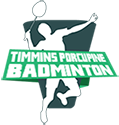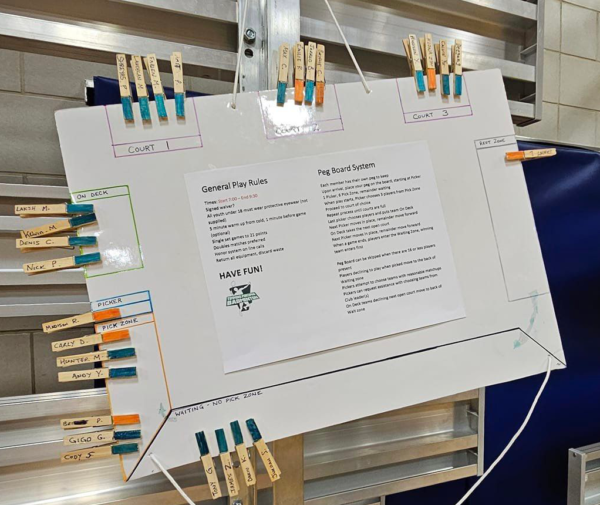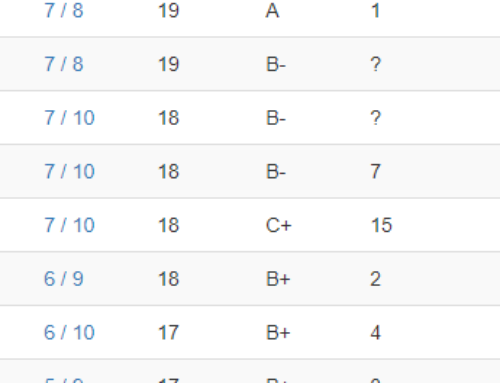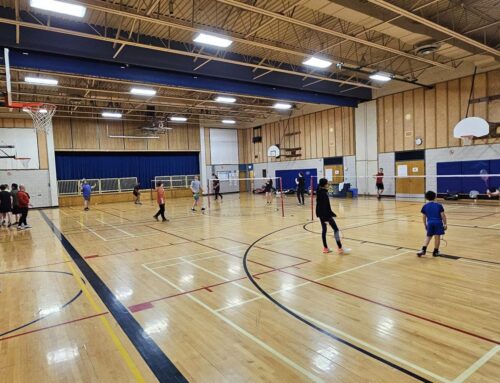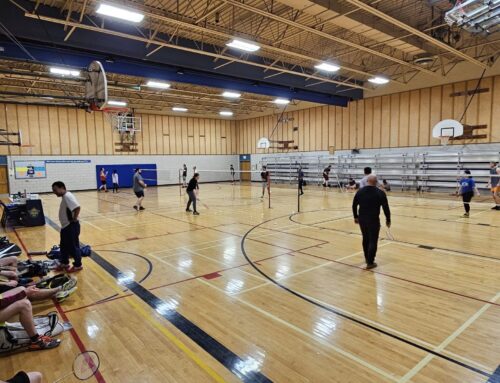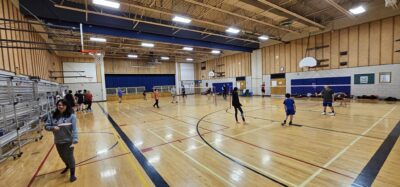
Trial run of the Peg Board System. All courts in action with membership congregating around the Peg Board.
On the last club night of 2023, we introduced the Peg Board System as a method for managing court time and game organization. After a brief overview of how the system operates, we quickly adapted to it as we navigated through several matches. It was heartening to witness members actively engaging in board management, from selecting teams and advancing pegs to calling out matches and explaining the system to others. This demonstrated a positive sign that court rotations could occur seamlessly without relying on a specific individual’s dedication.
How the system works:
- Players are represented by their pegs (clothespin)
- Blue identifies male and Orange identifies female players for quick identification for gender specific games (eg, M/M, M/F, F/F)
- Court rotation efficiency is gained by having players, teams, and courts determined and ready to play
- System attempts to balance court time and vary match ups
At the start of the evening:
- Prior to play, all players enter the along the bottom of the board in the Waiting / No-Pick Zone
- The initial order can be determined by way of shuffling, arrival order, etc.
- When play starts, the pegs move forward with the first in line taking the Picker spot
- The next 6 pegs occupy the Pick Zone
- The remainder stay in the Waiting Zone
- The Picker chooses 3 Pegs from the Pick Zone and proceeds to the Picker’s court of choice
- Pegs move forward with next in line occupying the Picker spot, and proceeds to choose teams and court – this repeats until courts are full
- The next Picker chooses their teams and places the Pegs in the On Deck zone
- All remaining Pegs move forward
Court Rotation
- When a match ends, all 4 pegs enter the Waiting Zone from the right with the winning team entering first
- On Deck team moves to the next available court
- The next Picker chooses their 3 Pegs and moves them to the On Deck zone, all other Pegs move forward
- Cycle repeats for the evening
General Rules
- Declining to play when picked results in the declining player moving to the back of the Waiting Zone
- On Deck players declining the next open court results in all On Deck players moving to the back of the Waiting Zone
- Pickers should attempt to choose balanced matchups based on abilities (eg. 3 beginner and 1 advanced is not an ideal matchup)
- The threshold for using the system is 17 or more players
Observations and comments:
- Some pickers needed assistance choosing games – seems this may decrease as we become more familiar with each other
- A good way to overcome uncomfortableness of approaching unfamiliar people directly for matchups
- Great to learn names of people we’ve been playing with for weeks
- Court movement seems more efficient as time spent determining teams, choosing courts, happens between matches with the on-deck system
- Picker system allows opportunity for all players to choose players and matchups
- Some matches ended up with similar, if not the same matchups throughout the evening – could be just due to the draw
- More mixing of teams than before
- System itself doesn’t take into account differences in abilities
- Number of advanced player matchups decreased
- Consideration of matchups when the 14-under/student members are present
- A provision for 2-player teams who wish to play together for the evening
- The system isn’t perfect!
Near the end of the evening, as members left, the system was abandoned as the numbers didn’t necessitate its usage, and the anarchy system went into effect. Ultimately, the trial run was a success, and we appreciate the membership for their patience and openness to trying something new. The feedback received has been valuable, generating more ideas for improvement.
